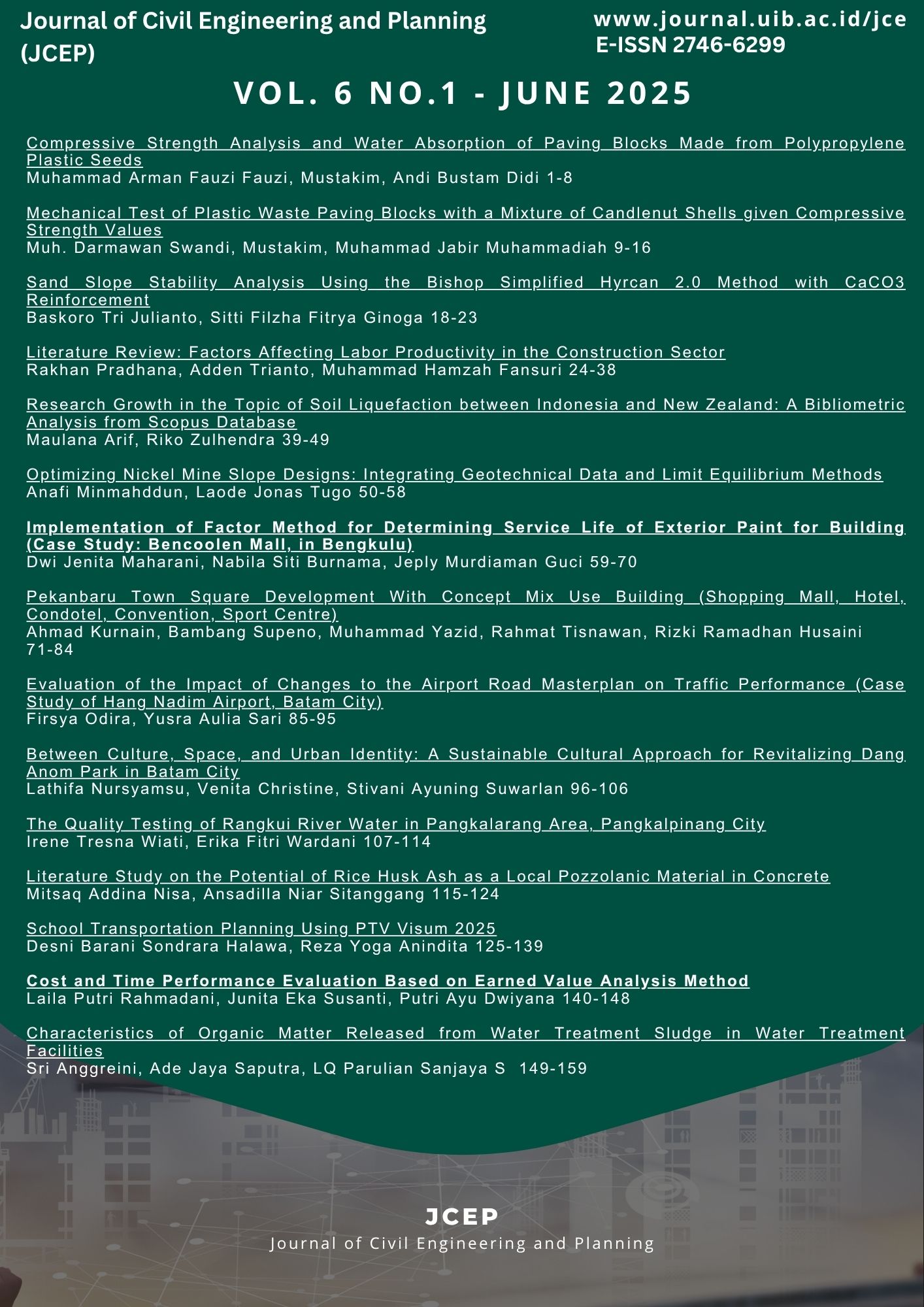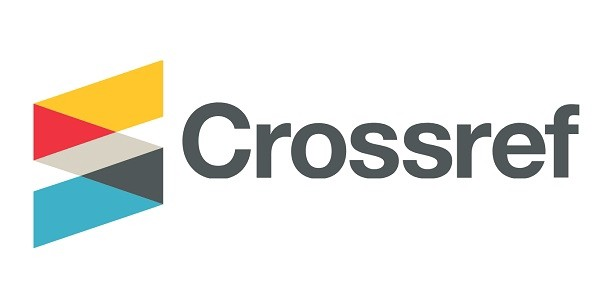Implementation of Factor Method for Determining Service Life of Exterior Paint for Building (Case Study: Bencoolen Mall, in Bengkulu)
DOI:
https://doi.org/10.37253/jcep.v6i1.10414Abstract
Building maintenance and care are essential responsibilities that must be managed effectively to ensure optimal building performance and appearance. One of the key aspects of building maintenance is painting. Painting not only enhances the visual appeal of a building but also contributes to its overall preservation. However, paint has a limited lifespan and resistance to fading or deterioration. The decline in paint quality often occurs before reaching its expected durability due to various environmental and social factors such as humidity, rainfall, wind, dust, sunlight, and human activity. Therefore, understanding the service life of exterior paint is crucial to ensure timely maintenance and upkeep of the building. A study was conducted on the existing exterior paint of the Bencoolen Mall building, located at Jl. Pariwisata No. 01, Bengkulu City. The purpose of this study was to determine the service life of the building’s exterior paint. The method used in this research was the factor method, which involves calculating the Estimated Service Life (ESL) based on known environmental factors and Reference Service Life (RSL) values. The results of the study indicated that the estimated service life of the building's exterior paint, using the factor method, is approximately 8.56 years. Based on these findings, it is recommended that periodic inspections and maintenance be conducted approximately every 8 years to ensure the exterior paint remains in good condition.
Downloads
References
[1] U.-U. R. INDONESIA, NOMOR 28 TAHUN 2002 TENTANG BANGUNAN GEDUNG, 2002.
[2] F.-C. I and De Brito j, “Discussion of proactive maintenance strategies in facades, coating of social housing,” Journal of Building Appraisal, vol. 5(3), pp. 223-240, 2010.
[3] C. Chai, de Brito J, Gaspar P and Silva A, “Statical modelling of the service life of exterior painted surfaces,” Int J Strateg Prop Manag, vol. 19(2), pp. 173-185, 2015.
[4] M. F. Rodrigues, J Teixeira, J Cardoso and Anjos A, “Envelope index evaluation model of existing buildings,” Civil Engineering and Environmental Systems, vol. 30(1), pp. 26-39, 2013.
[5] F. M. Yudha, “ANALISIS SERVICE LIFE TIME GEDUNG PERKULIAHAN FAKULTAS FILSAFAT UNIVERSITAS GADJAH MADA YOGYAKARTA,” Universitas Atma Jaya, 2016.
[6] D. Suryana, Cara Membuat Cat, Jakarta: CreateSpace Independent Publishing Platform, 2013.
[7] N. J. Habibie and Saiful Anwar, “Pengaruh Perbandingan Campuran Cat dengan Thinner Terhadap Kualitas Hasil Pengecatan,” JTM, vol. 02(03), pp. 97-108, 2014.
[8] G. MA, P. PV and Branco FA, “Service life prediction of facade paint coating in the old buildings,” Cons Build Mater, vol. 29, pp. 394-402, 2012.
[9] P. S. C. INDAH, 2011. [Online]. Available: https://www.sci-paint.com/about. [Accessed March 2025].
[10] “A Studio Arsitek,” April 2011. [Online]. Available: file:///Users/dwimaharani/Library/CloudStorage/OneDrive-UniversitasAndalas/REFERENSI%20SERVICE%20LIFE/a:%20Berapa%20tahun%20umur%20material%20dan%20bagian%20bangunan.html. [Accessed April 2025].
[11] I. 15686-1, “Buildings: Service Life Planning,” Genenva, International Organization for Standardization, 2017.
[12] M. M and dkk, “Application of the factor method to the prediction of the service life of external paint finishes on facades,” Material and Structure, vol. 49, pp. 5209-5225, 2016.
[13] E. F and dkk, “Aplication of factor method to estimated the service life of natural stone cladding,” Construction and Building Materials, pp. 484-493, 2014.
Downloads
Published
Issue
Section
License
Copyright (c) 2025 Dwi Jenita Maharani, Nabila Siti Burnama, Jeply Murdiaman Guci

This work is licensed under a Creative Commons Attribution 4.0 International License.



_0011.jpg)









